






| Yellow-legged Hornet (Vespa velutina (Lepeletier, 1836)) |







|
|
Scientific name: Vespa velutina (Lepeletier, 1836) Common name: Yellow-legged Hornet Other names: Asian Hornet French name: Frelon à pattes jaunes, Frelon Asiatique. Order: Hymenoptera Family: Vespidae Wingspan : 17 to 32mm, early worker generations are smaller. Biotope: Open or urbanized areas. Geographic area: Temperate and tropical Asia. The Vespa velutina nigrithorax subspecies originated from continental Asia with a temperate climate was accidentally introduced to France in 2004 and is spreading to neighbouring countries, i.e. in 2020: Germany, Belgium, the Netherlands, Great -Brittany, Italy, Spain, Portugal. Observation period : March to December. Abandoned nests are visible in winter. |
As indicated by its common name the Yellow-legged Hornet shows yellow tarsi. This is one mean to tell it apart from the European Hornet (Vespa crabro) which shows rather reddish brown tarsi. The following description only deals with the Vespa velutina nigrithorax subspecies, adapted to temperate climate and introduced to Western Europe. This subspecies has a yellow face. The top of the head and thorax are black. The segments of the abdomen are dark brown with a thin yellow border except for segment 4 which bears a broad orange band. The nests are often built at the top of trees but also sometimes under ventilated sheds or in hollow trees. They grow gradually during the development of the colony and can reach 70 cm in diameter and 90 cm in height. Colonies die early winter and nests are abandoned. Only young queens over winter in diapause in sheltered places. They come out in spring to found new colonies that will build new nests. Yellow-legged hornets capture insects to feed their larvae and can greatly harm honey bee populations. They hunt hovering in front of the hives and impact the colonies by their captures but also by the stress caused and the reduction of comings and goings for foraging. Yellow-legged Hornets are generally much darker in colour than European Hornets, which are slightly larger in size and show large red and yellow areas. |
| [To know more about the Yellow-legged Hornet] [Next picture] [Top] |
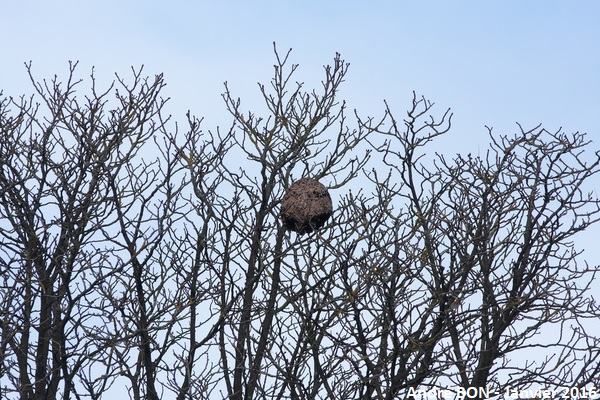
|
I am starting with pictures of nests. As I sort my photos according to the shooting dates, it will be necessary to wait a little longer for photos of the Hornet itself. I have passed dozens of times in this park without noticing anything. I had to wait leaf fall and winter to notice this abandoned nest, high up in a tree. |
| [To know more about the Yellow-legged Hornet] [Next picture] [Previous picture] [Top] |
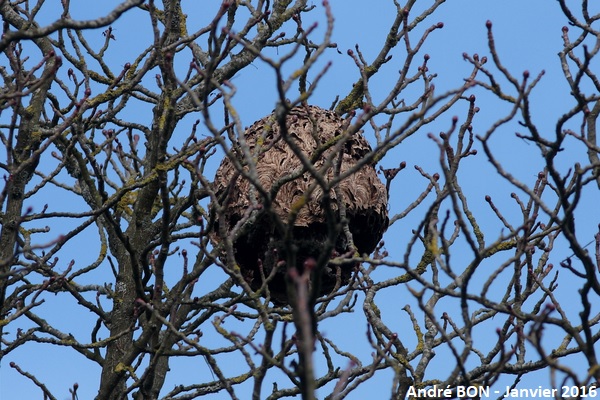
|
Not easy to measure the size of this nest but I think the diameter is about 50 cm. |
| [To know more about the Yellow-legged Hornet] [Next picture] [Previous picture] [Top] |

|
The days are getting shorter and colder. This Yellow-legged Hornet was observed on top of the garden gate. It was no longer very mobile and was very easy to photograph. |
| [To know more about the Yellow-legged Hornet] [Next picture] [Previous picture] [Top] |
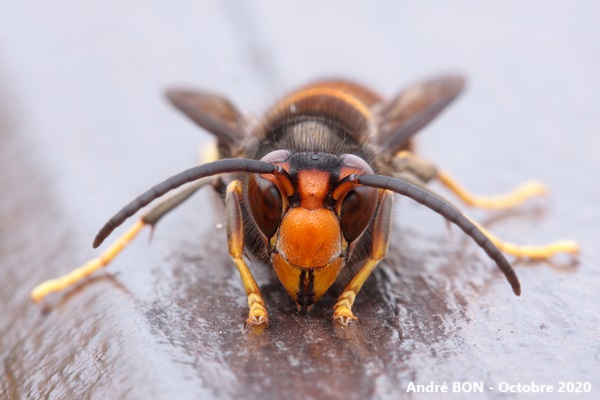
|
Following this close-up photo this Yellow-legged Hornet fell to the ground and appeared too weak or numb to move on. I think it was nearing the end of its life. |
| [To know more about the Yellow-legged Hornet] [Next picture] [Previous picture] [Top] |

|
The Yellow-legged Hornets are more and more numerous in the Paris area and this one entered the house, perhaps during his search for insects. It had trouble finding the exit and I was able to shoot a few pictures towards a closed window. |
| [To know more about the Yellow-legged Hornet] [Next picture] [Previous picture] [Top] |
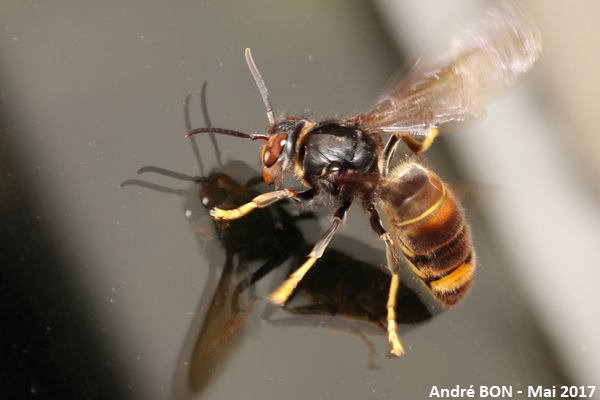
|
The yellow legs and the rather dark colour make it easy to differentiate it from its European cousin. |
| [To know more about the Yellow-legged Hornet] [Previous picture] [Top] |
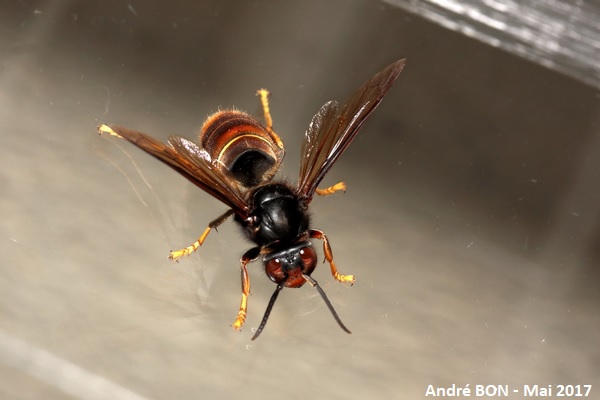
|
Here is a last photo shot just before this Hornet leaves to the open air. |